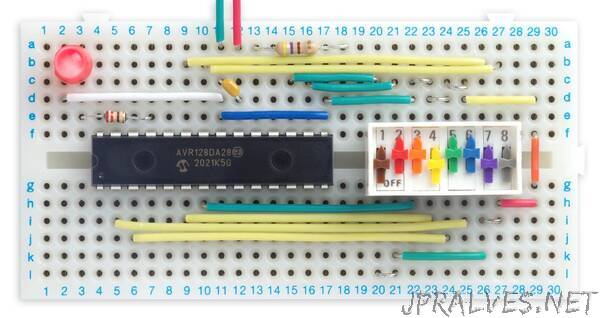
“This project is a digital combination lock that only lets you activate a circuit if you know the 8-bit key. It demonstrates an application of Configurable Custom Logic, a feature included in the latest AVR DA-series chips from Microchip
As a comparison, I implement the same application using a conventional program, and discuss the pros and cons of each approach.
Introduction
The latest AVR processors released by Microchip all include a new feature called Configurable Custom Logic, or CCL, and since their release I’ve been trying to think of compelling applications of this feature. It allows you to construct an arbitrary logic circuit that works independently of the processor. This project demonstrates one practical application, using the logic functions to construct an arbitrary logic expression.
CCL is included in three ranges of AVR devices: the new ATtiny 0-series and 1-series, the new ATmega 0-series, and the AVR DA series which Microchip announced in May of this year. I decided to use one of the AVR DA series; although most of the parts are in surface-mount packages, they have fortunately made the AVR128DA28 available in a 28-pin DIP package which is ideal for experimenting with on a prototyping board. Spence Konde already has an Arduino core called DxCore available for the DA series [1], and this includes instructions for making yourself a suitable UPDI programmer.
By the way, if like me you’re familiar with the way in which the old ATtiny and ATmega processor registers are configured, you may find the naming conventions used in the DA series quite confusing. I recommend reading Microchip’s document Getting Started Writing C-code for XMEGA, which explains the conventions, and the rationale behind them; thanks to @awneil on AVR Freaks for suggesting this.”
